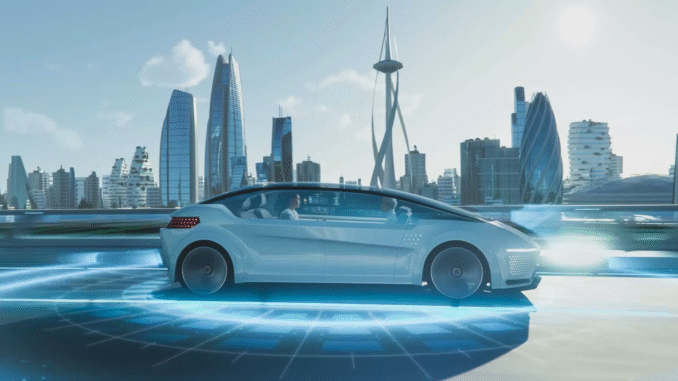
Autonomous Cars Are Set to Transform the Automotive Industry in 2025
The automotive industry is on the cusp of one of its most revolutionary changes in history. Autonomous vehicles (AVs), also known as self-driving cars, have moved beyond the realm of science fiction and are quickly becoming a reality. In 2025, these vehicles are expected to play a critical role in shaping the future of transportation, dramatically impacting not only the way we drive but also the broader automotive industry, the economy, and our daily lives.
The emergence of autonomous cars promises to change everything from vehicle design to transportation infrastructure and even urban planning. In this article, we will explore how autonomous cars are poised to transform the automotive industry in 2025 and beyond, considering the technological, economic, and societal shifts that will follow.
1. The Rise of Fully Autonomous Vehicles
By 2025, it’s expected that fully autonomous vehicles (Level 5 automation) will be in widespread use, with no need for human intervention whatsoever. While semi-autonomous vehicles (Level 2 and Level 3) are already on the market—such as Tesla’s Autopilot or GM’s Super Cruise—complete self-driving technology is likely to be the norm in the next five years.
Level 5 autonomy means that the car can handle all driving functions, including navigation, decision-making, and road safety, without the need for a driver or steering wheel. These vehicles will rely on a combination of advanced sensors, AI algorithms, and real-time data from various sources (such as cameras, radar, LiDAR, and V2X communication) to understand and navigate their environment.
As autonomous technology improves, manufacturers and tech companies are working on creating self-driving cars that are safer, more reliable, and more efficient. These vehicles will reduce human error—a leading cause of traffic accidents—thus making roads safer and reducing fatalities.
Benefits: Improved road safety, fewer accidents, and reduced human error in driving.
2. A Shift in Car Ownership and Usage Models
One of the most profound impacts of autonomous cars will be a dramatic shift in car ownership and usage models. As self-driving vehicles become more accessible, ownership models are likely to evolve. Traditional car ownership could decline, giving way to new, more flexible mobility solutions such as car-sharing and ride-hailing services.
Companies like Uber, Lyft, and Waymo are already experimenting with autonomous ride-hailing fleets, which could become a dominant way of getting around in urban areas by 2025. With self-driving cars, there will be less need for private car ownership in densely populated cities, as autonomous ride-hailing services will be cheaper, more efficient, and more convenient than owning a car.
Moreover, autonomous cars will make it easier for people who were previously unable to drive—such as the elderly or disabled—to use transportation services independently. This democratization of mobility will have significant social implications, improving the quality of life for many individuals.
Benefits: Reduced need for personal car ownership, increased access to transportation for all demographics, and the growth of shared mobility solutions.
3. Impact on Automotive Manufacturers and Supply Chains
As autonomous vehicles continue to evolve, the role of traditional automotive manufacturers will undergo significant changes. Traditional car companies will need to shift their focus from just producing cars to developing advanced software and AI systems that power self-driving vehicles.
This shift will require automakers to collaborate with tech companies and invest heavily in research and development. Additionally, car manufacturers will increasingly become providers of services and mobility solutions rather than just product manufacturers. A key part of this transformation will involve the creation of safer, more efficient autonomous driving systems that can work seamlessly with road infrastructure.
The supply chain for autonomous vehicles will also evolve. Sensors, cameras, LiDAR, and other advanced components will play a critical role in the design of autonomous cars. Manufacturers will need to form partnerships with tech companies and specialized suppliers to meet the demands of this new era of automotive technology. Companies that fail to keep up with these innovations may fall behind, while those that embrace the future of autonomous technology could be poised for massive growth.
Benefits: New business opportunities for automakers, partnerships with tech firms, and increased demand for high-tech automotive components.
4. Revolutionizing Traffic Management and Infrastructure
One of the most overlooked aspects of autonomous cars is their potential to revolutionize traffic management and urban infrastructure. Autonomous vehicles have the capability to communicate with each other and with traffic infrastructure in real time, enabling smoother and more efficient traffic flow.
With the implementation of Vehicle-to-Everything (V2X) communication, autonomous cars can receive real-time updates about road conditions, traffic lights, accidents, and hazards, allowing them to make better decisions. These smart vehicles can adjust their speed, reroute, and even synchronize with other vehicles to avoid congestion and reduce traffic jams.
Additionally, smart cities of the future will be designed with autonomous vehicles in mind. This means that urban planners will have to design roads, parking lots, and traffic systems that accommodate self-driving cars, creating more efficient transportation networks. Furthermore, as more people switch to autonomous ride-hailing services, cities may experience reduced traffic congestion and improved air quality due to fewer privately owned vehicles on the road.
Benefits: Reduced traffic congestion, more efficient use of road infrastructure, and smarter cities.
5. Changes in Insurance and Liability Models
The introduction of autonomous vehicles will also lead to changes in the insurance industry. In traditional vehicles, insurance models are based on driver behavior, as the driver is primarily responsible for accidents or incidents. However, with autonomous cars, the liability for accidents will likely shift from the driver to the manufacturer or software developer behind the self-driving system.
As a result, new insurance models will emerge that focus more on the technology and reliability of autonomous driving systems rather than individual driver behavior. Manufacturers will need to ensure their self-driving systems are robust and free from malfunctions to avoid legal and financial consequences.
Moreover, as autonomous vehicles become more widespread, we may also see a reduction in overall insurance premiums, as the number of accidents caused by human error decreases significantly. This could lead to lower costs for consumers and a shift in how insurance companies assess risk.
Benefits: Lower insurance premiums, new liability models, and a focus on vehicle technology.
6. The Environmental Impact of Autonomous Vehicles
While autonomous cars have the potential to reduce traffic accidents and congestion, they could also play a significant role in reducing carbon emissions and improving sustainability. Most self-driving cars will be electric vehicles (EVs), further contributing to the shift away from fossil fuel-dependent vehicles.
The widespread adoption of electric autonomous vehicles will help reduce greenhouse gas emissions, particularly in urban areas, where most vehicle emissions occur. Furthermore, autonomous EVs will be optimized for energy efficiency, using AI systems to minimize energy consumption and reduce overall environmental impact.
Autonomous vehicles will also enable more efficient use of resources, as cars can be designed to operate in fleets rather than individually. This will result in fewer cars on the road and a reduction in overall resource consumption, as cars will be used more effectively through car-sharing and ride-hailing services.
Benefits: Reduced carbon emissions, greater environmental sustainability, and improved energy efficiency.
7. New Job Opportunities and the Evolution of the Workforce
As autonomous vehicles gain traction, they will create new job opportunities while transforming existing industries. While self-driving cars may lead to job losses in certain sectors (such as truck driving), they will also generate new positions in fields such as vehicle maintenance, software development, AI programming, cybersecurity, and data analysis.
Moreover, as ride-hailing and car-sharing services become more widespread, jobs in fleet management, customer support, and operations will grow. Cities will also need to develop new infrastructure, which will require a skilled workforce in construction, engineering, and urban planning.
In the coming years, society will need to adapt to these changes by providing retraining opportunities for workers in industries that may be affected by automation. This shift in the workforce will require collaboration between government, businesses, and educational institutions to ensure a smooth transition.
Benefits: Job creation in new sectors, evolving workforce dynamics, and new opportunities for education and training.
Conclusion
By 2025, autonomous cars will not only revolutionize the way we drive but also reshape the entire automotive industry. From transforming car ownership and usage models to revolutionizing traffic management, insurance, and infrastructure, the impact of self-driving vehicles will be profound. While challenges such as regulatory hurdles, safety concerns, and workforce transitions remain, the future of autonomous cars promises a more efficient, sustainable, and accessible transportation system for all.
As the technology continues to mature and gain acceptance, we are on the verge of entering a new era in automotive history—one where self-driving cars are a common sight on our roads, fundamentally changing the way we think about mobility.

